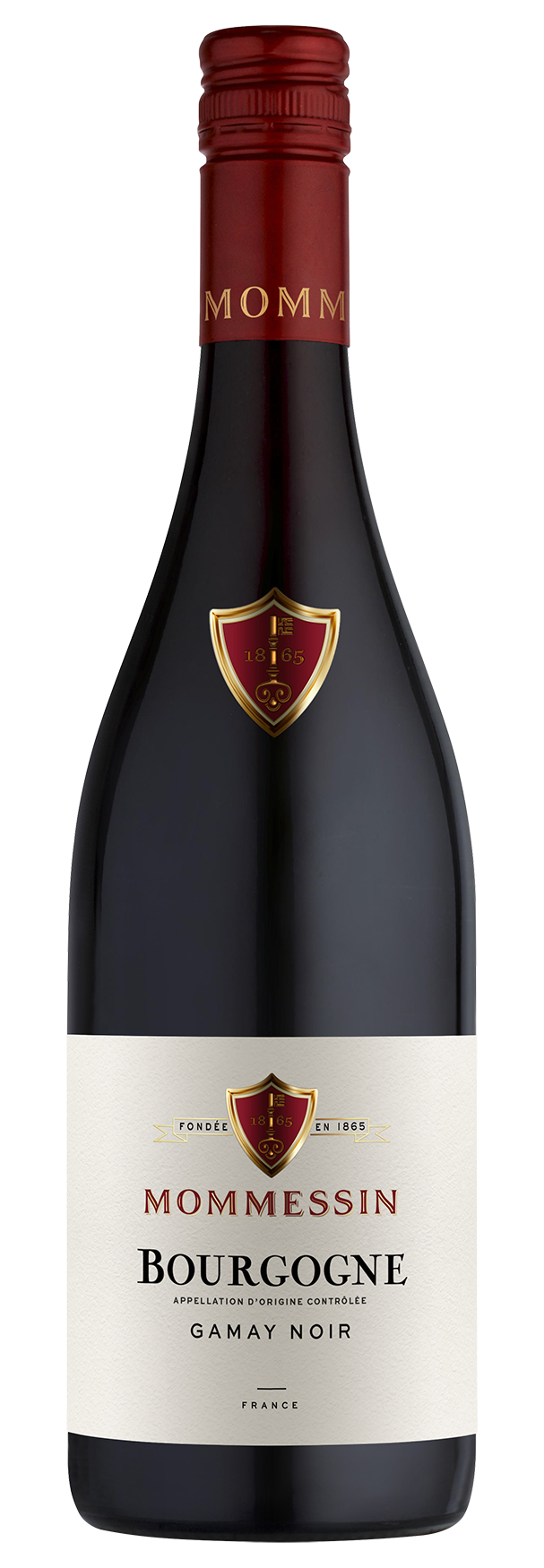Grape varietal
100% Gamay Noir.
Tasting notes
Bouquet: Intense nose with black and ripe fruits aromas such as burlat cherries, blueberry and blackcurrant, blending perfectly with spicy and roasted notes.
Palate: Fleshy mouth, both fruity and spicy with elegant, mellow tannins and a nice complexity offering a light sensation of sweetness in osmosis with the fruity aromas.
Serving suggestions
Serve at a temperature of around 15-16°C. (59-60°F.).
Food and wine pairing
Will be perfect paired with all type of delicatessen, cold and cured meats, red meat and cheese but also exotic dishes such as couscous, chili con carne, fajitas and tajine.
Ageing potential
Ready to drink now but can also be kept 2 to 3 years.
Origins
Bourgogne Gamay became a new regional appellation from the 2011 vintage.
The grapes must come exclusively from the Beaujolais Crus: Brouilly, Chénas, Chiroubles, Côte de Brouilly, Fleurie, Juliénas, Morgon, Moulin à Vent, Régnié and/or Saint Amour.
Gamay from the vineyards of the Beaujolais and Beaujolais Villages appellations cannot be used in the case of this new appellation.
Vinification and maturing
Maceration lasted around 15 days under controlled temperature (25-28°C.) with regular cap punching and pumping over. After pressing, the temperatures are lowered in order to preserve the fruit aromas.
The wine is then transferred into stainless-steel tanks for a major part to obtain a good balance maximum fruit flavours and the delicate wood brought by the other part of the cuvée which was aged in barrels.
Malolactic fermentation was totally completed to bring roundness to the wine.
Vintage : 2023
The first harvest began on September 4th. Despite a period of scorching heat, the grapes are superb, promising an exceptional vintage.
The intense heat at the end of August accelerated the maturation of our Gamay. This vintage is characterized by great heterogeneity between the plots. Some struggled with the extreme conditions, losing a lot of juice, while others resisted admirably. Several factors explain these variations: soil type, exposure, vine age, and yield. The differences between early and late-ripening zones are minimal, reflected in the variability of the analytical data from one cuvée to another, with potential alcohol levels ranging from 12° to 14°. Although we anticipated a bountiful harvest in the spring, we are seeing a significant reduction in volumes. The berries have thick skins and reveal aromas of raspberry liqueur, cherry, as well as notes of violet, dark chocolate, and even pear!
The musts have a high sugar concentration and marked acidity. This year, we favored destemming to prolong the maceration of our Gamays. In addition to the traditional whole cluster semi-carbonic maceration, we opted for hot pre-fermentation maceration to maximize color extraction from the grapes most affected by the drought.



